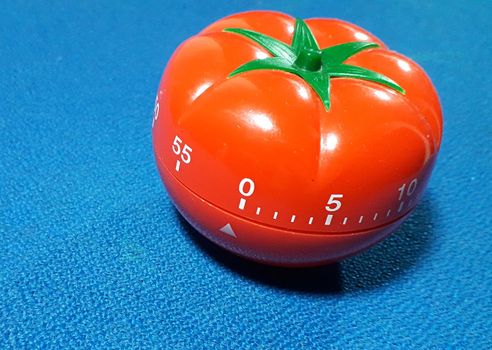Reading time: Just over 2 minutes
The pomodoro technique is a time-management tool used by millions of people around the world. It’s particularly useful for writers and students….
I’m a big believer in the magic of three. You know — the three little pigs, the three Musketeers, the three Stooges. There’s something ineffable but magical about a list of three. So, about a decade ago, when I had three unrelated people forward me a Wall Street Journal article on the Pomodoro technique in less than a week, I took it as a sign. This was something I needed to investigate!
I quickly learned that the Pomodoro technique was a time management system. That cemented my attention right away. I had started my working life as a journalist where I had to focus all my energy on meeting relentless deadlines. Then, when I was in my mid-30s, I had given birth to triplets and the precious commodity of time became even more important (and ever more elusive).
Anyway, the Pomodoro technique, which was developed by Italian inventor Francesco Cirillo in the late 1980s, is based on working in intense, 25-minute bursts. During these working intervals you refuse to be interrupted, either by other people or by your own bad habits.
To monitor your time and attention, Cirillo suggests using a kitchen timer. In Italian, pomodoro means “tomato,” and in his home country many kitchen timers are shaped in such a fashion (see photo at the top of this post).
To perform a pomodoro, set your timer for 25 minutes and then give the work your total concentration. Don’t answer the phone. Don’t check email. Don’t surf the internet or check Facebook. Don’t do anything except your work. As soon as the timer “dings,” take a regulated five-minute break and then start on another Pomodoro.
I’ve been working this way for more than 10 years now and I can tell you that my productivity took a huge leap as soon as I became comfortable with the system. (It took me less than a week.) I had long used a kitchen timer to motivate myself to finish tasks I’d resisted — such as vacuuming or working on my taxes — but this technique, which is more carefully developed than any practice of mine, offered even more substantial results. I think it works for some of the same reasons that Dr. Wicked is so effective: it causes you to focus. It makes you put all of your attention on the task at hand.
When I first started travelling down the pomodoro path, I persuaded my friend Eve to go with me. I remember meeting her after we’d both been trying the system for about a week. We sat down in a coffee shop and she immediately pulled a little red plastic hen from her purse to show me her timer. Even though Cirillo had advised all participants to work with a noisy timer, I’d initially assumed he was wrong. “He’s no writer,” I said to myself, as I silently installed my silent digital timer.
But when my friend reported she found the tick-tocking noise a “comforting wall of sound,” I decided to give it a try. I’m on a Mac and couldn’t find a free digital timer (that was also noisy) so I ended up buying one called Action Enforcer, which I can highly recommend. It’s tick-tocking as I write this post. (I’m not an affiliate, so I’ll earn nothing if you decide to buy it.)
In fact, I’ve discovered that the noise is an essential part of the system. Whenever I hear the tick-tocking it now makes me want to write. In essence, I’ve performed Pavlovian conditioning on myself.
Another strong point of the technique is the way it allows you to retain your optimism. As Cirillo says in his book, “the next Pomodoro will go better.”
You can find lots of useful information on Cirillo’s website or, if you like, you can buy his book. But the truly great thing about the technique is that it’s free. It depends only on your own commitment and determination — and your willingness to give it a try.
An earlier version of this post first appeared on my blog on Dec. 1, 2009.
*
Have you ever tried the pomodoro technique? Would you recommend it to others? We can all learn from each other so, please, share your thoughts with my readers and me in the “comments” section of my blog. Anyone who comments on today’s post (or any others) by March 31/19 will be put in a draw for a copy of the non-fiction book The Artful Edit by Susan Bell. Please, scroll down to the comments, directly underneath the “related posts” links below. Note that you don’t have to join the commenting software to post. See here to learn how to post as a guest.

